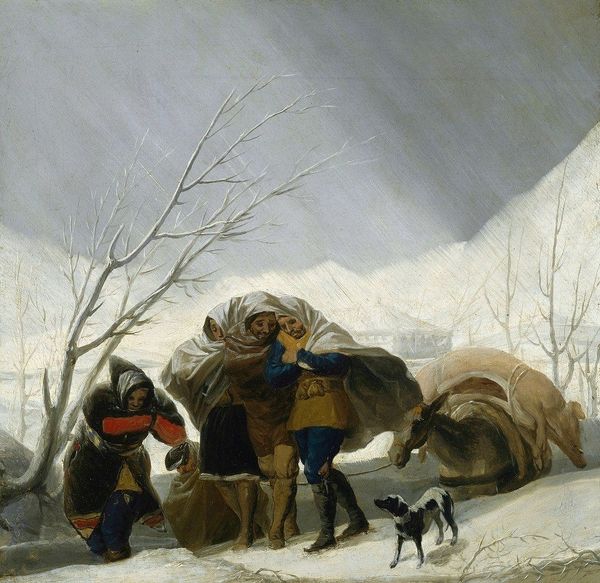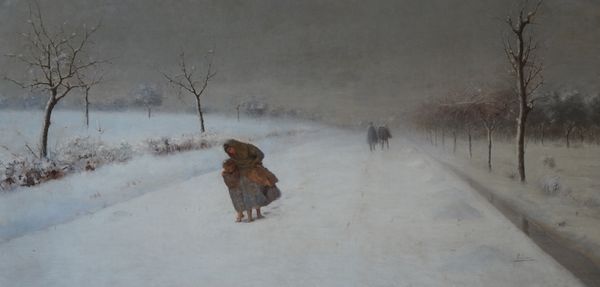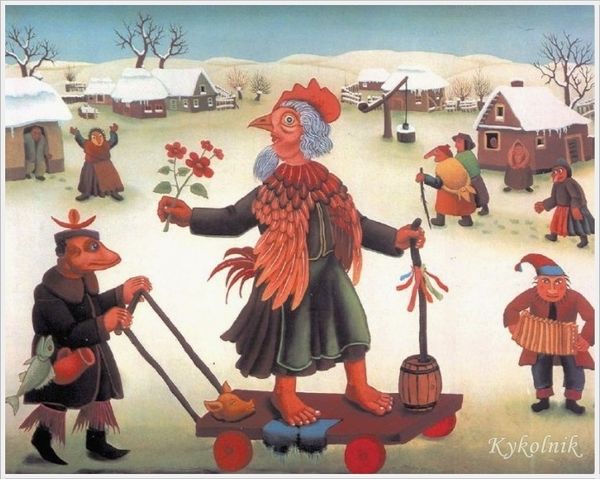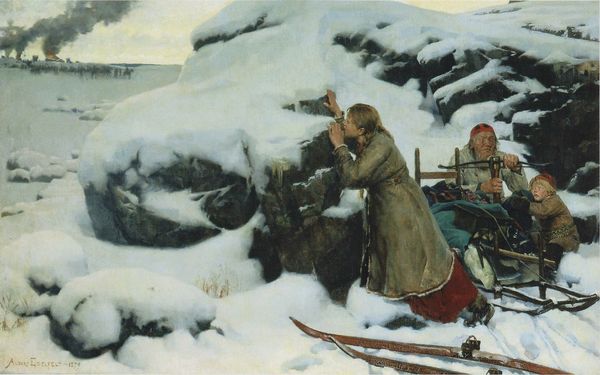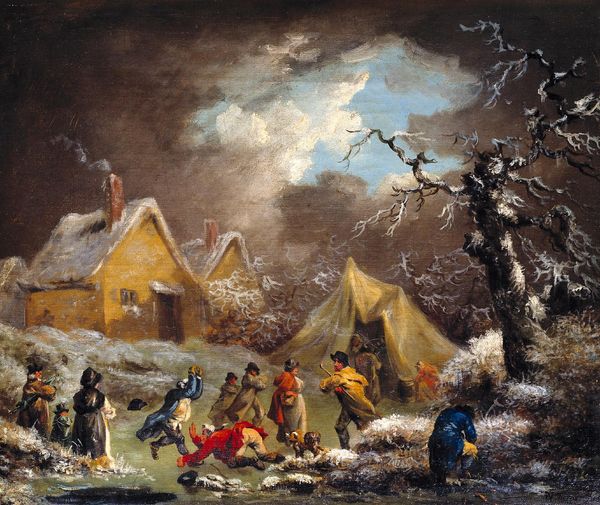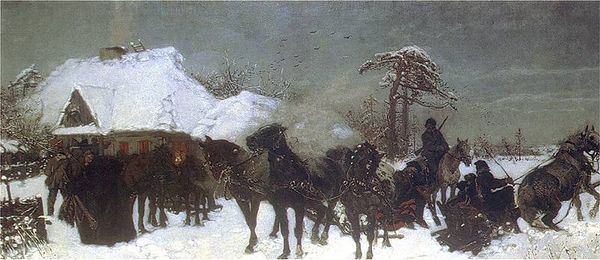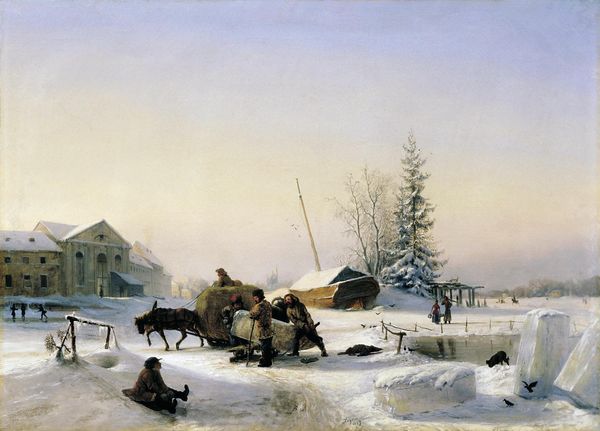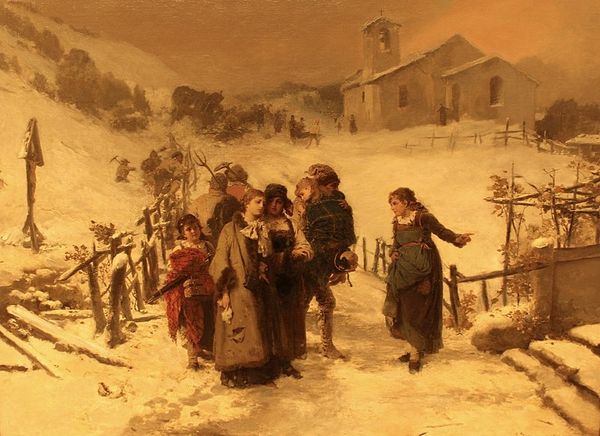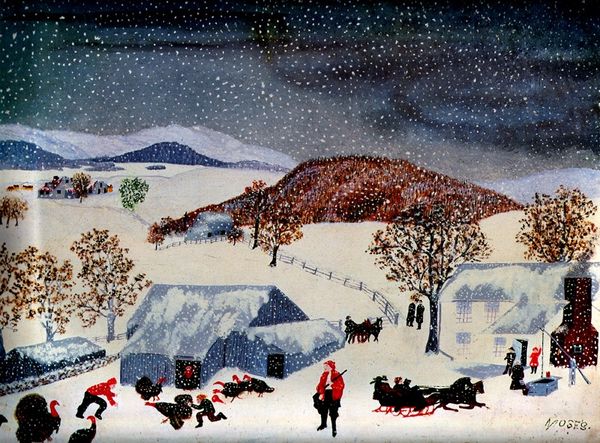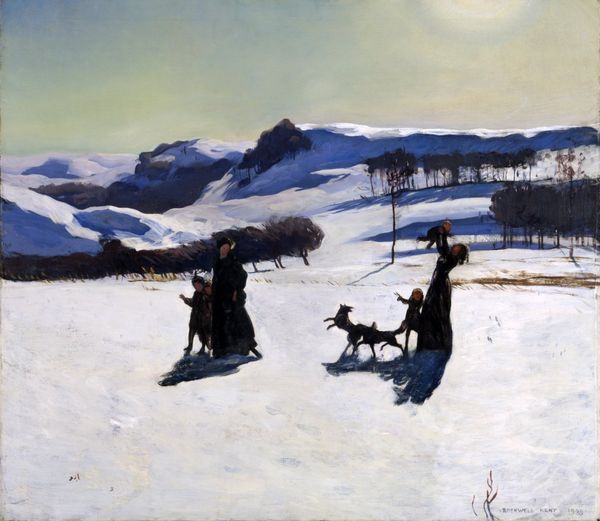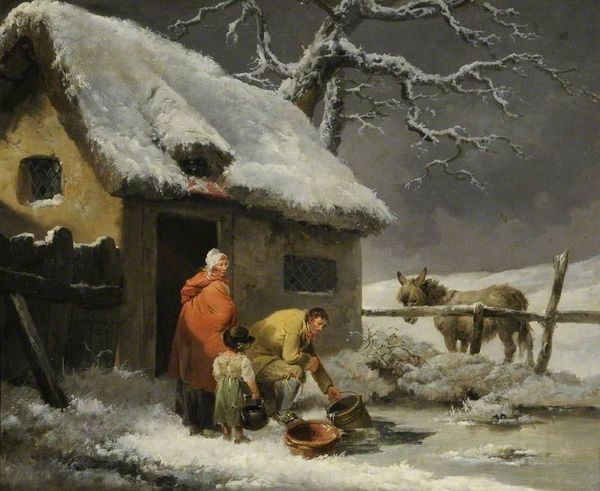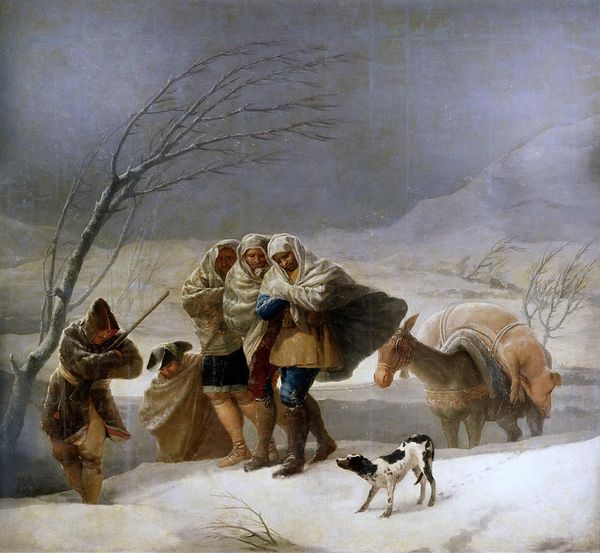
painting, oil-paint
#
narrative-art
#
painting
#
oil-paint
#
landscape
#
figuration
#
oil painting
#
romanticism
#
genre-painting
#
realism
Copyright: Public domain
Curator: A brisk, grey day indeed! Here we have Gustave Courbet's painting entitled "Poor Woman of the Village." It offers us a glimpse into a world defined by hardship. Editor: Immediately, I'm struck by the starkness, the relentless white of the snow. It almost feels like the landscape itself is bearing down on these figures. Curator: Observe how the woman is weighed down, physically, by that immense bundle of firewood she carries, but also, symbolically, by what it represents: poverty, struggle, the need to survive. Editor: Absolutely. And that bundle isn't just firewood, is it? It's the weight of generations, the burdens of a thankless existence, presented with brutal honesty. I think of Sisyphus with his boulder. The goat is a complicated symbol, usually. But what can it possibly represent here, dragging it through the snow? Is it a family pet, a food supply, or perhaps something darker, the woman's stubborn will to survive, despite everything? Curator: I think all of those readings are plausible. Note that while Courbet is known as a realist, there are certainly Romantic elements here as well. Look at the sheer drama of the sky, for instance. It evokes nature’s power, and nature’s indifference to human suffering. It seems both sublime and menacing at the same time. Editor: The child, though. There’s something about that child, trudging along. It reminds me of the children that sometimes haunt the backdrops of the Madonna. But unlike the blessed children, she appears destined to inherit the woman's fate. There is a lack of grace and movement in both subjects, as if frozen by the coming ice age. Curator: A fascinating comparison. Consider how this painting contrasts with other portrayals of rural life during this time, which often romanticized the peasantry. Courbet isn't offering us an idealized vision; he's showing us a stark reality. And this isn't to say the woman is stripped of dignity—I sense fortitude, even defiance, in her stooped posture. Editor: It's a scene so laden with hardship, it could almost become maudlin. Yet, that single goat at her side injects a flicker of unexpected warmth and humanity into the composition. I can't help but wonder at the story behind that woman, behind the child, behind that landscape, and their life, struggling against it all. Curator: Exactly. Courbet’s image persists as a reminder of how powerful art can be as social commentary. The artwork's impact is not only how it can visually captivate us, but also provoke discussion about challenging subject matter.
Comments
No comments
Be the first to comment and join the conversation on the ultimate creative platform.

